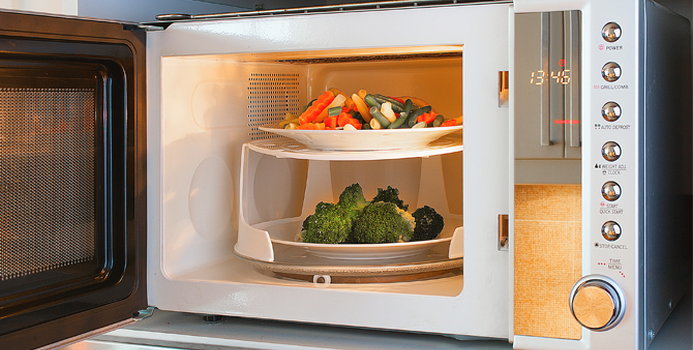You may not be aware that cooking can often remove the nutrients from food. You want to eat right, so you prepare healthy meals at home. To keep the nutrients in the food, you must handle it properly at every stage of the cooking process. Here's how you can get the maximum vitamins and nutrition out of the food you eat.
Start With the Best Ingredients
To ensure that nutritional quality of your meals, start with the best, freshest ingredients. Buy only enough vegetables and fruits to last a day or two. Never buy more than that. Try to use fresh or frozen ingredients whenever possible; avoid canned.
Choose more dark green and orange vegetables. These are higher in vitamins than many others. It's important to get your vitamins from a balanced diet, rather than relying on supplements. Cantaloupes, mangos, oranges and peaches are always safe bets.
When cooking meats, again, use fresh cuts. Lean meat may cost a little more, but it's more nutritious. Fish is also high in protein, vitamins and minerals, but low in fat.
Use Appropriate Cooking Methods
For vegetables, steaming and microwaving are the best cooking methods. These methods cook the food without leeching out valuable nutrients. When you drain the liquid from them, don't throw it away; use it to make soups, stocks and broths.
When cooking spinach or other leaf vegetables, cook them very briefly, just until they're wilted. This helps retain their nutrients.
Bake your meat, poultry and fish rather than frying it. This seals in nutrients, and allows you to flavor the dish with herbs and vegetables rather than salt and butter. Lean meat can be coated in whole wheat flour and sauteed rather than baked; seal in the flavor of fish by wrapping it in tinfoil and baking it. Battered and fried fish is high in saturated fats.
Add More Fiber
You can increase the nutritional content of your meals by adding high fiber foods. Use whole wheat flour instead of white flour; it's higher in fiber and also contains more protein and higher levels of vitamin E. Add lentils or beans to salads, soups and stews. They're low in fat, but high in protein, fiber, vitamins and minerals; high-fiber foods also make you feel full longer, so you won't be tempted to overeat.
Pay Attention to the Food Pyramid
When cooking, pay attention to the food pyramid and the calorie information it provides. You'll notice that your diet should consist mostly of whole grains, balanced with vegetables, fruits, dairy products and meat. Avoid fats and sugars. These foods have a high calorie contents and very few nutrients.
When frying, avoid butter, vegetable shortening and margarine, as they are high in saturated fats; use a small amount of olive or canola oil instead. Use non-stick skillets and heat them well prior to use. Searing your meats before frying helps lock in the nutrients. When stir-frying vegetables, make sure not to overcook; the vegetables should still be crisp.



